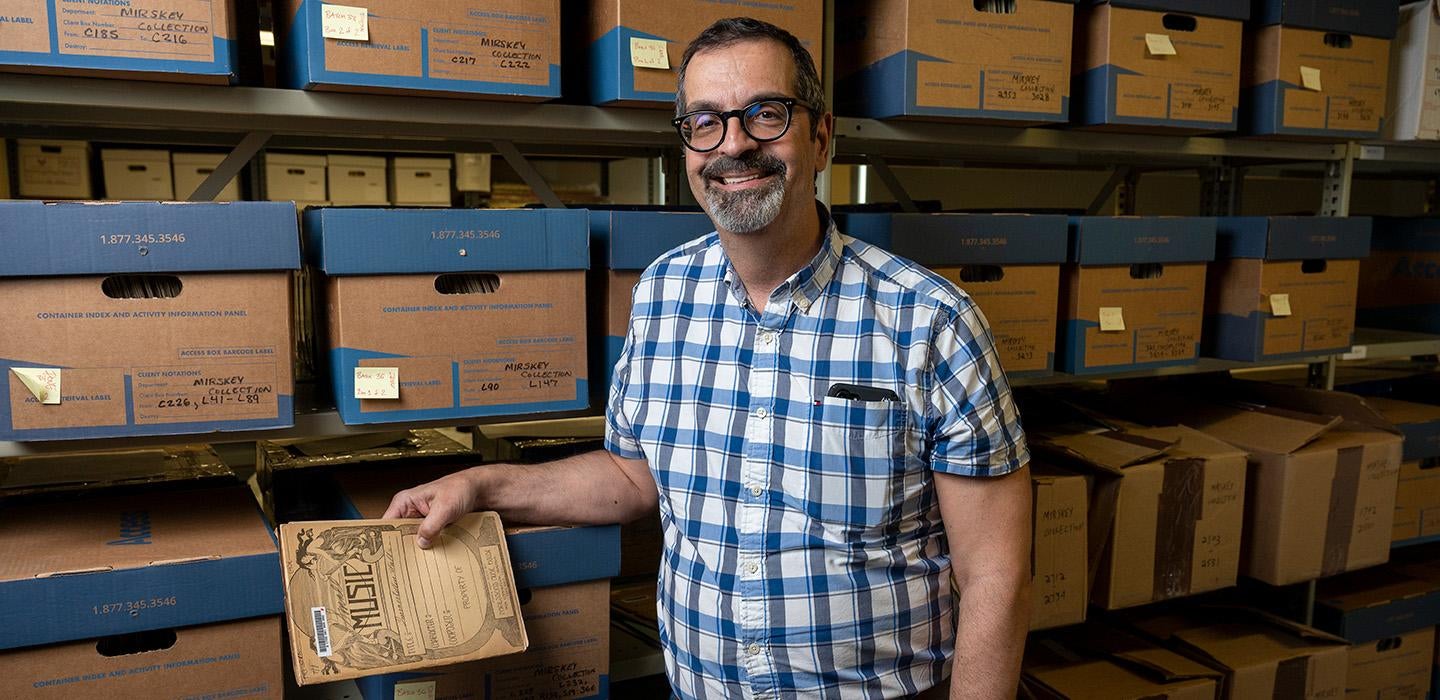
Subscribe to 51ľ«Ć·ĘÓƵwire Today
Get the most interesting and important stories from the 51ľ«Ć·ĘÓƵ.If you had walked into the Metropolitan Theater in Washington, D.C., in 1921, it wouldn’t just be a crowd and a screen. Between the two would be a 30-piece orchestra — violins, brass and woodwinds — and leading them all would be Nek Mirskey, a prolific conductor and scorer of silent films. Ěý
In March, a yearslong effort to categorize and digitize Mirskey’s music collection wrapped up at 51ľ«Ć·ĘÓƵ, making it available for historians and the public amid a renewed interest in silent film.
“This is really a spectacular collection,” said Department of Music Professor in the Kenneth P. Dietrich School of Arts and Sciences. “I think it's going to have wide impact on the study of silent film.”
Mirskey, a Polish violinist, began working as an orchestra conductor after he arrived in the U.S. in 1914 and became a conductor-in-residence at a number of theaters across the country. That meant creating scores for the movies being shown, too — a task he set himself upon with passion.
“Whereas some conductors would score maybe one film a week, Mirskey was known to do four or five a week,” said Cassaro, who led the project to digitize the Mirskey Collection as head of 51ľ«Ć·ĘÓƵ’s Theodore M. Finney Music Library. “I don’t know when he had the time to do anything else.”
The collection was donated to 51ľ«Ć·ĘÓƵ in 1991, and with a grant from the National Endowment for the Humanities, the digitization process began with a team of graduate students who sorted and catalogued documents. Staff members in the Digital Research Library then scanned the documents with help from members of the preservation team, who assisted with fragile documents. The roughly 3,500 sets of music that make up the collection .
Mirskey’s collection includes some musical series released at the time to go along with certain kinds of scenes — a bit like a mood-based streaming playlist, with songs for romance, drama or dance sequences — but also works by composers like Wagner and Beethoven. That was the source material Mirskey would use to create a score, assembling snippets and matching moods, tones and story beats to transport the audience to the world of the film.
It's surprising the collection survived at all, according to Cassaro. Many collections from the time were degraded or lost due to the brittle and acidic nature of the paper that was common back then. The collection is also notable for featuring margin notes and even handwritten parts Mirskey would have added between performances, boosting its value as a historical document.
“The technique of scoring films then was a different animal since there was the ability to redo things,” Cassaro said. “The soundtrack in many ways lived separately from the film.”
Now, the collection stands as a free online resource both for historians looking to understand how composers shaped the representation of characters on screen in silent films and for those attempting to screen silent films today how viewers would have experienced them in the 1920s. It’s already seen use by respected silent film historians Gillian Anderson (no relation to the X-Files star) and Eric C. Cook, Cassaro said.
Not only is this a gem in the library system’s collection, it’s also a high note for Cassaro, along with another recent digitization grant from the Grammy Museum. “I’m about to retire: July 24 is my last day,” he said. “Those two major grants, I think, really certainly are a highlight of my career.”
Ěý
Photography by Tom Altany


